MITLL2/MITLL2a Non-linearity with AAO1 controllers

The MITLL2 and MITLL2a detectors - some history
The MITLL2 detector was first commissioned on the AAT itself in October 1997, and then the device was lumogen coated in December 1997. It went into general use in the AAPS in 1998. In January 2000, it suffered a catastrophic failure. It was able to be revived, but only by switching to the use of the other on-chip amplifier. The "revived" device was known as the MITLL2a (and is so indicated in file headers).
MITLL2/MITLL2a test data at the AAT exists from 2000 and 2001. There is no MITLL2 linearity data in the AAT archive. Unfortunately the MITLL2a data from 2000 and 2001 was taken with the flat-field lamp in an unstable state, and is of almost no use.
The MITLL2a itself suffered a catastrophic failure in August 2002, and was withdrawn from service. It had ceased to be used for AAPS observations well before this date. However, it is longer available to obtain linearity data with, so we have to rely on archival data.

MITLL2 Lab test data - October 1997. Printouts of lab test data for the MITLL2 detector have been obtained and typed back into suitable files for analysis in the same way as the 2004/5 lab test data for the EEV and data acquired at the telescope. As noted before the main issue here is the need to independently normalise "chunks" of data taken with different banks of LEDs. This is complicated for lab test data from 1997 and 2000 by the fact that shutter times of 0.2s and 0.1s have to be discarded, as the shutter clearly doesn't work in any measurable fashion at such short exposure times. The shutter open-close time is quite small - around 3ms.
Nonetheless, doing the best we can with the available data we find the following solutions for the MITLL2 in FAST and NONASTRO. As with the EEV these are consistent with being the same linearity correction, when the differing gains of the detectors (and the uncertainties associated with normalising between "chunks") are taken into account.
The non-linearity of the MITLL2 is very significant - it is 4% non-linear near 60000adu in FAST. A fifth-order polynomial has been used to parametrise it in these plots.
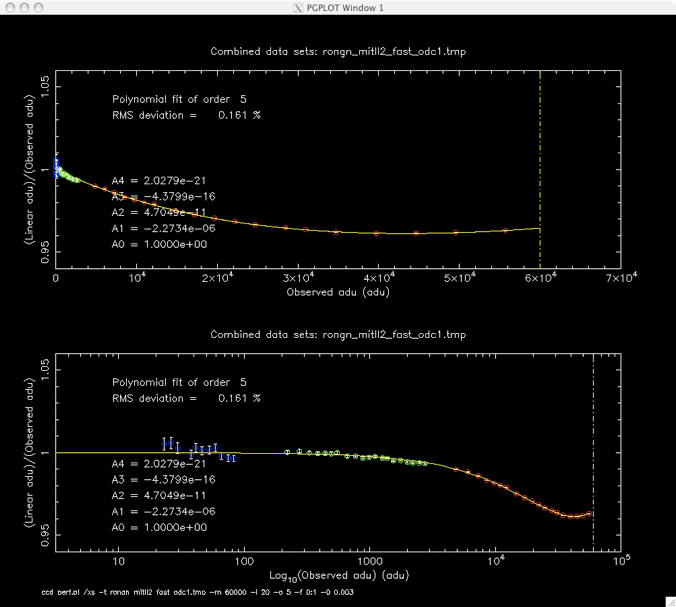

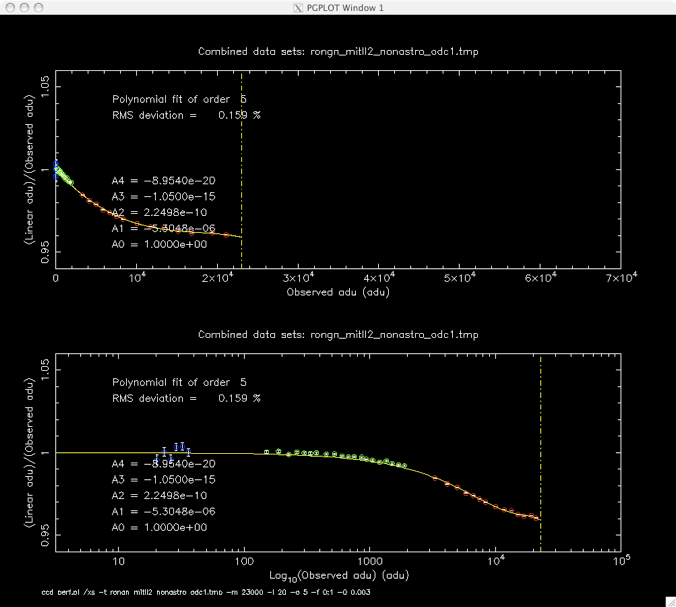

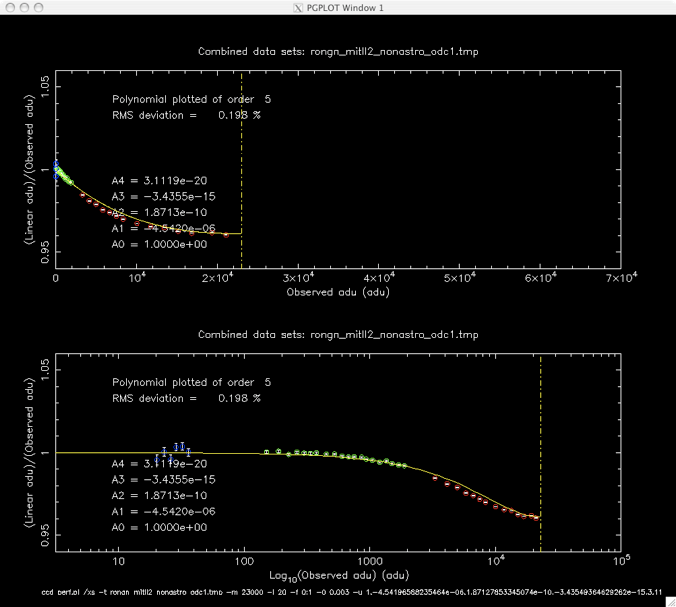


MITLL2a Lab test data - March 2000. Printouts of lab test data for the MITLL2 detector have been obtained and typed back into suitable files for analysis in the same way as the 2004/5 lab test data for the EEV and data acquired at the telescope. As noted before the main issue here is the need to independently normalise "chunks" of data taken with different banks of LEDs. This is complicated for lab test data from 1997 and 2000 by the fact that shutter times of 0.2s and 0.1s have to be discarded, as the shutter clearly doesn't work in any measurable fashion at such short exposure times. The shutter open-close time is quite small - around 3ms.
As before we have analysed this data as best we can, and derive the following solutions. Here it is obvious that the MITLL2a has much smaller non-linearity than the MITLL2 - at most 1.5% non-linear near 30000adu in FAST, and almost linear gain by 60000adu. So MITLL2 solutions cannot be used to correct MITLL2a data - clearly the amplifier used has significant impact on the detector's linearity. (Though as with the MITLL2, the data is consistent with a single linearity correction at both FAST and NONASTRO).
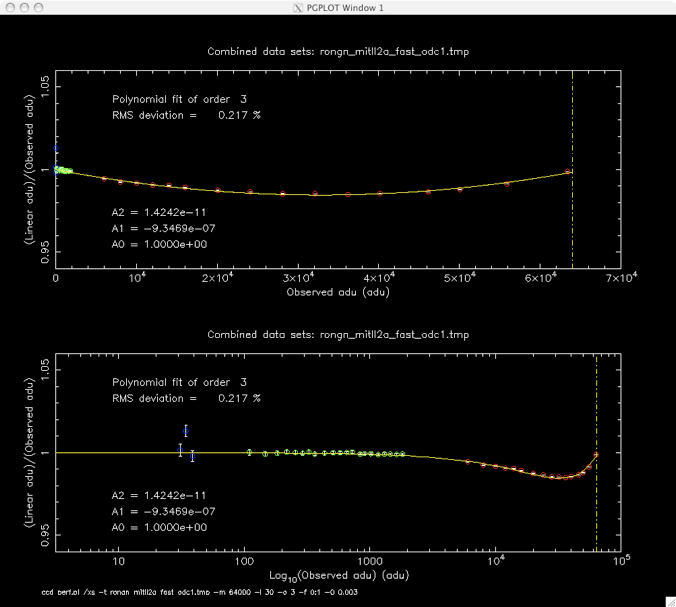

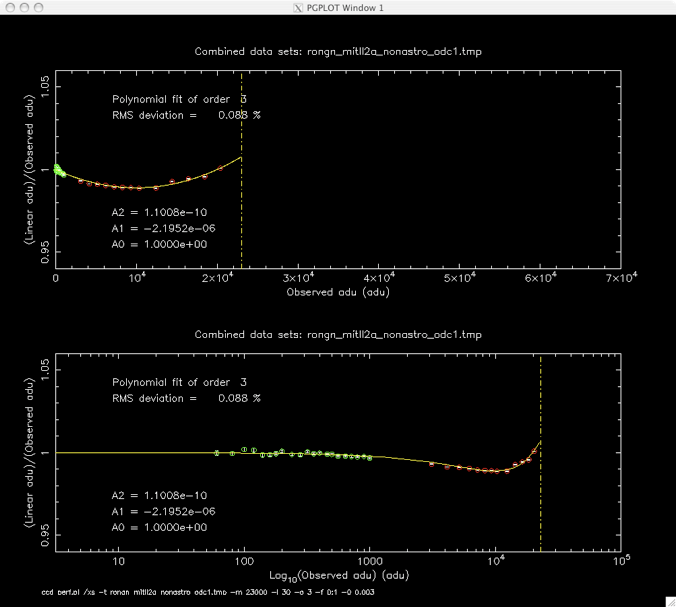

The FAST solution for MITLL2a (converted to a parametrisation appropriate for a different gain) shows the worst deviation of any case examined. However as the non-liearity for this detector is small, and noting the difficulty of normalising between chunks in this data set, I do not believe it invalidates the conclusion that we actually have the same non-linearity in both speeds.



